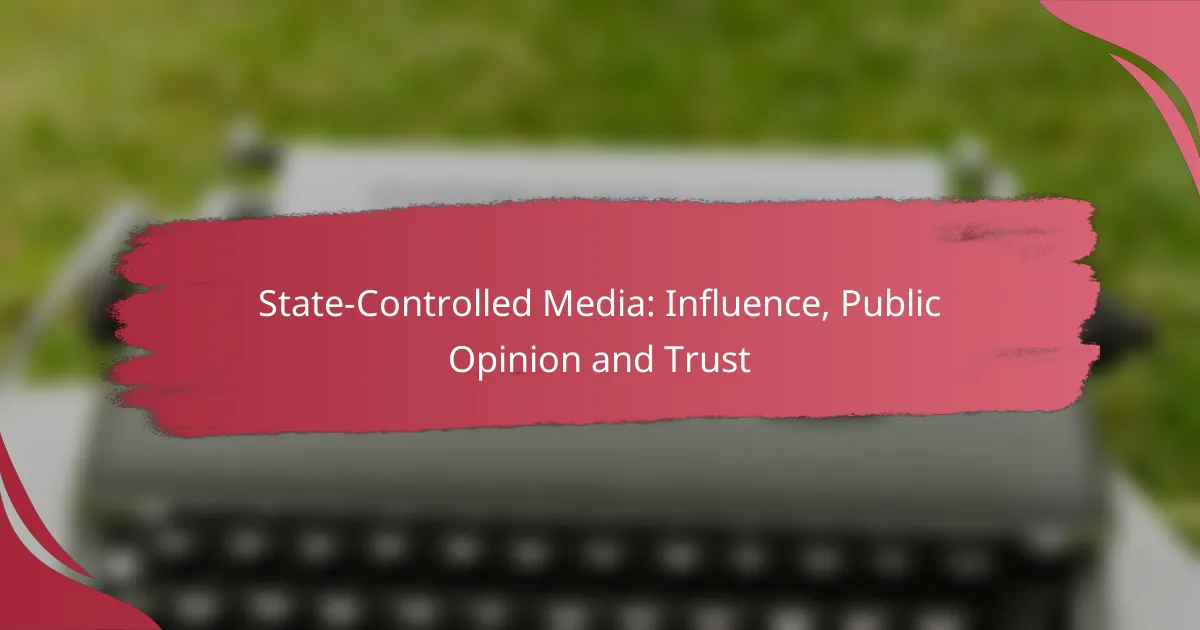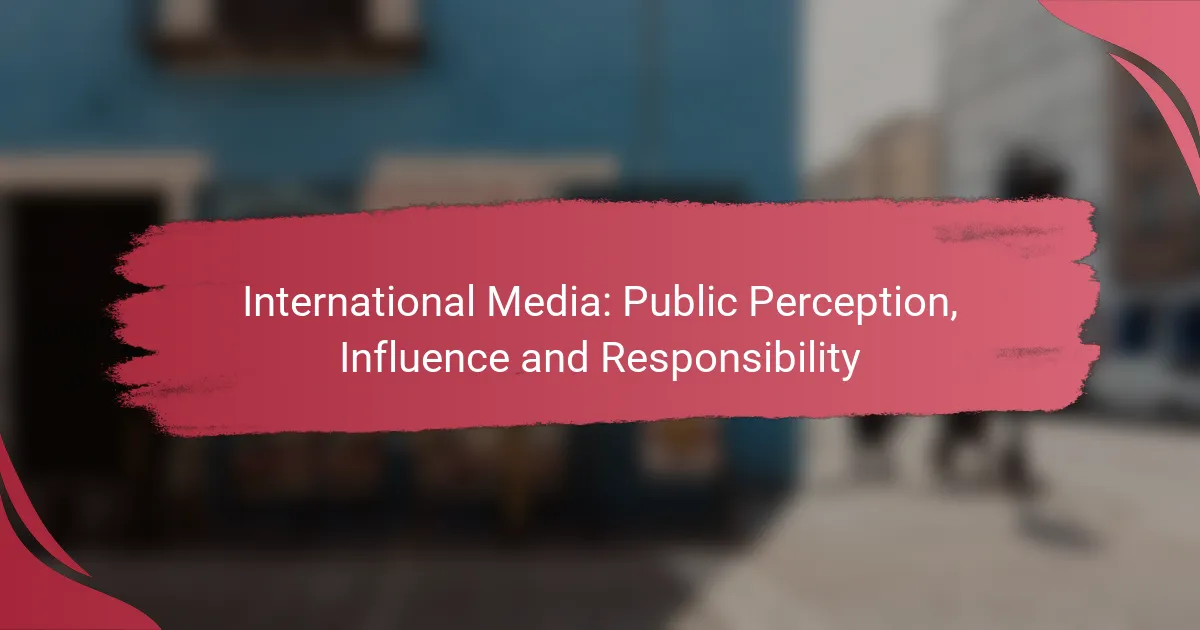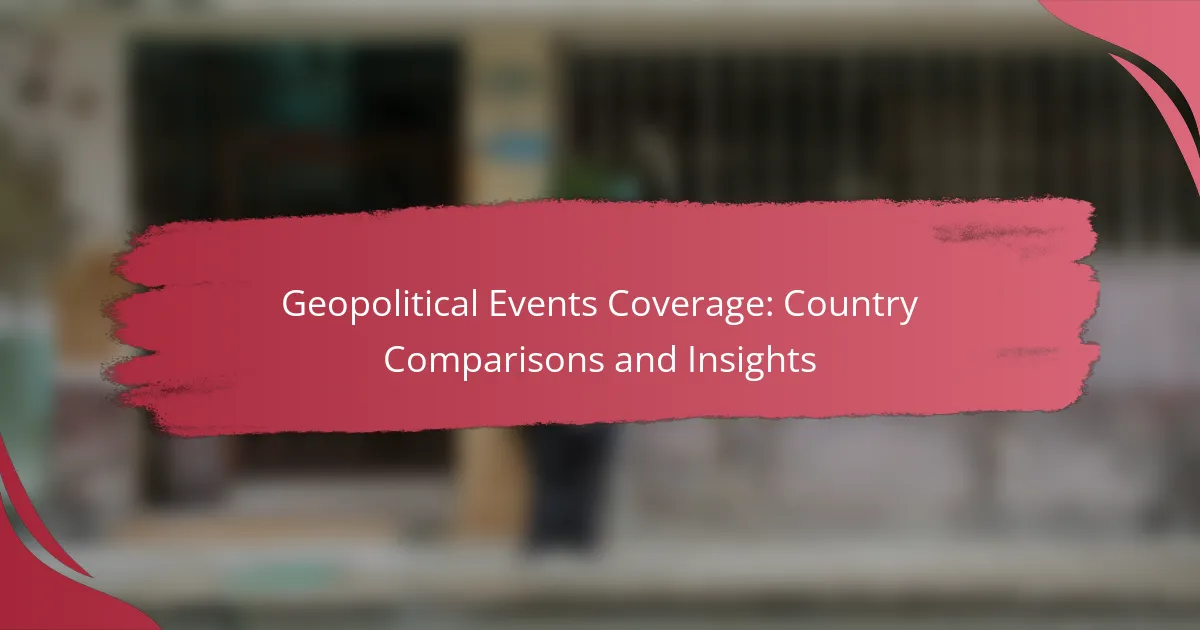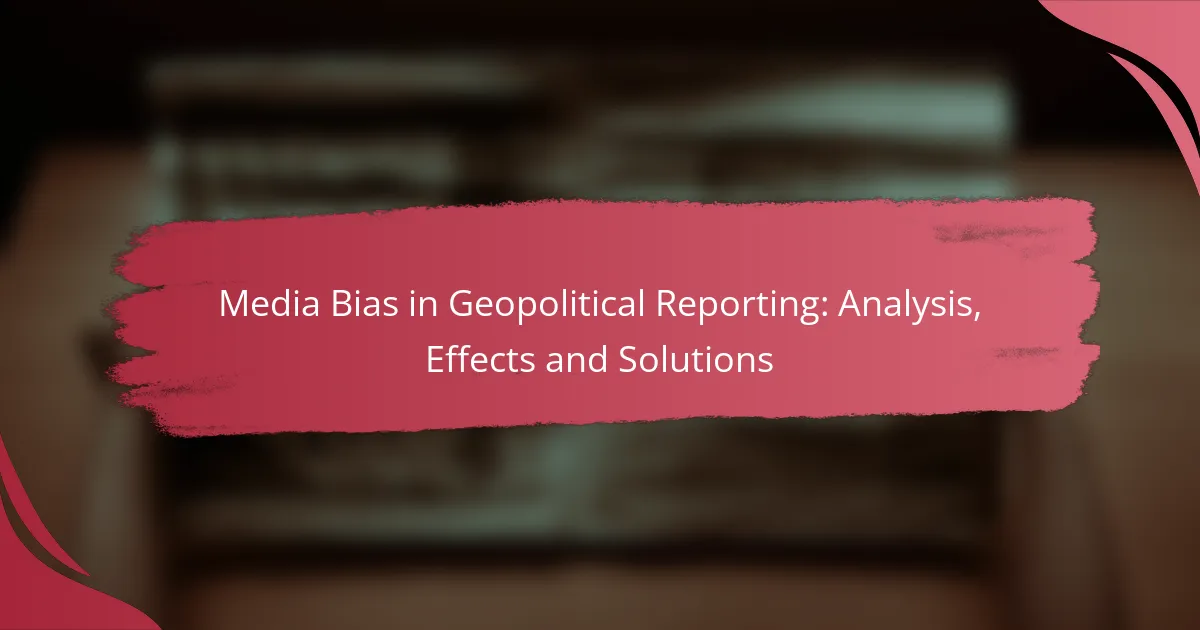State-controlled media plays a crucial role in shaping public opinion by directing narratives and controlling the flow of information. This influence can distort citizens’ perceptions of political, social, and economic issues, leading to skepticism about the information provided. The extent of this control varies across countries, reflecting their unique political structures and cultural contexts.
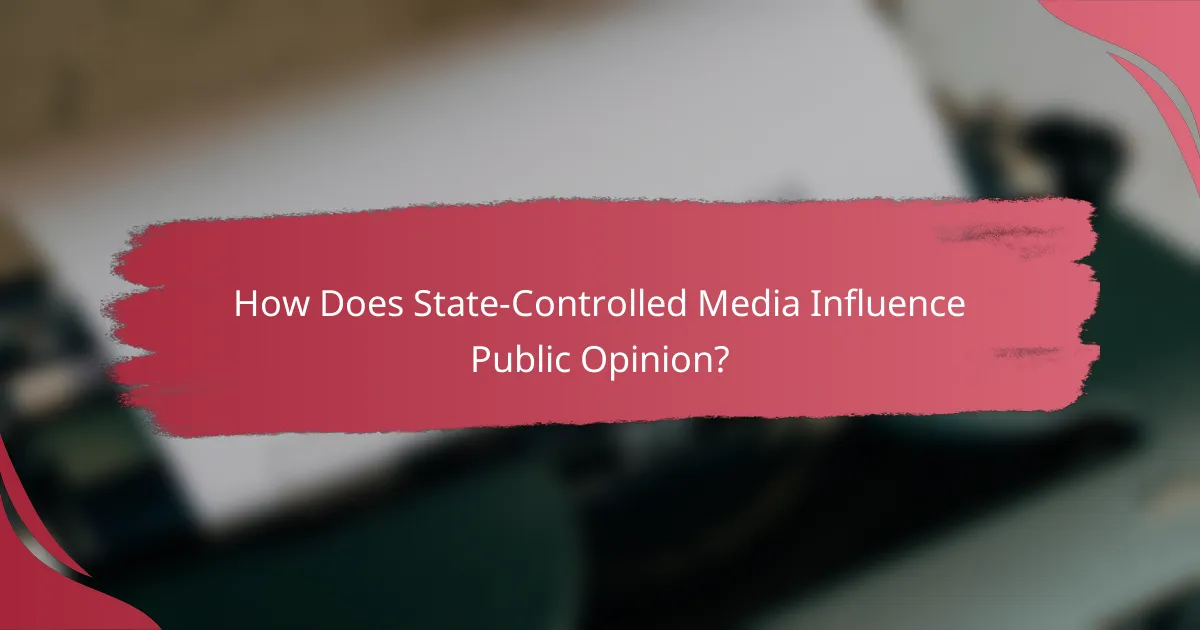
How Does State-Controlled Media Influence Public Opinion?
State-controlled media significantly shapes public opinion by directing the narrative and controlling the information available to the public. This influence can lead to a skewed perception of reality, affecting how citizens view political, social, and economic issues.
Shaping narratives
State-controlled media often crafts specific narratives that align with government objectives, promoting particular ideologies or viewpoints. This shaping of narratives can manifest through selective reporting, emphasizing certain events while downplaying or ignoring others. For instance, a government may highlight economic successes while minimizing coverage of social unrest or criticism.
By consistently presenting a particular perspective, state media can create a dominant narrative that becomes ingrained in public consciousness, making alternative viewpoints less visible or credible.
Controlling information flow
Controlling the flow of information is a key strategy employed by state-controlled media. This can include restricting access to foreign news sources, censoring dissenting voices, and prioritizing state-approved content. Such control limits the diversity of opinions available to the public, which can lead to a homogenized understanding of events.
In many cases, this information control is enforced through regulations that restrict media ownership or impose strict guidelines on reporting, ensuring that the state’s message remains unchallenged.
Impact on perception
The influence of state-controlled media on public perception can be profound, often leading to a distorted understanding of reality. Citizens may develop trust in the media that aligns with government narratives while becoming skeptical of independent or foreign sources. This trust can create a feedback loop, where the public increasingly relies on state media for information.
Moreover, the portrayal of political figures and policies can significantly impact public sentiment, shaping approval ratings and electoral outcomes. For example, favorable coverage of a government initiative can enhance public support, while negative portrayals can diminish trust and confidence in leadership.
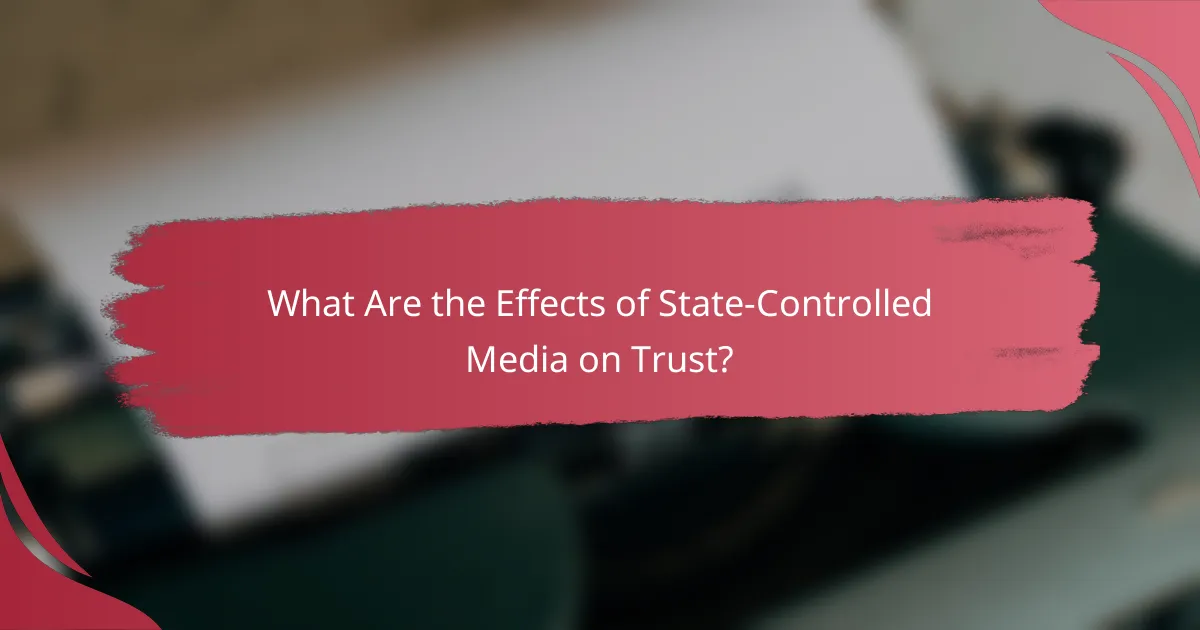
What Are the Effects of State-Controlled Media on Trust?
State-controlled media can significantly impact public trust by shaping narratives and influencing perceptions. When the government controls media outlets, it often leads to skepticism about the information being presented, affecting how citizens view both the media and the state.
Trust erosion
Trust erosion occurs when citizens begin to doubt the reliability of state-controlled media. This skepticism can stem from perceived bias, censorship, or the lack of diverse viewpoints. Over time, as trust diminishes, people may turn to alternative sources, which can further fragment public opinion.
For example, in countries with heavy media regulation, citizens might rely on social media or foreign news outlets for information, leading to a less informed public and increased polarization.
Perceived credibility
The perceived credibility of state-controlled media often suffers due to government influence. When the public believes that news is tailored to serve political agendas, they may question the authenticity of the information presented. This perception can lead to a general distrust of all media sources.
In some cases, state media may attempt to improve credibility by incorporating independent journalism or expert opinions. However, if these efforts are seen as superficial, they may not effectively restore public confidence.
Public skepticism
Public skepticism towards state-controlled media can manifest in various ways, including reduced viewership and increased criticism on social platforms. Citizens may express doubts about the accuracy of reports, especially during crises or political events, where impartiality is crucial.
To combat skepticism, state media organizations might need to adopt transparency measures, such as disclosing funding sources or editorial processes. Engaging with the audience through feedback mechanisms can also help rebuild trust over time.
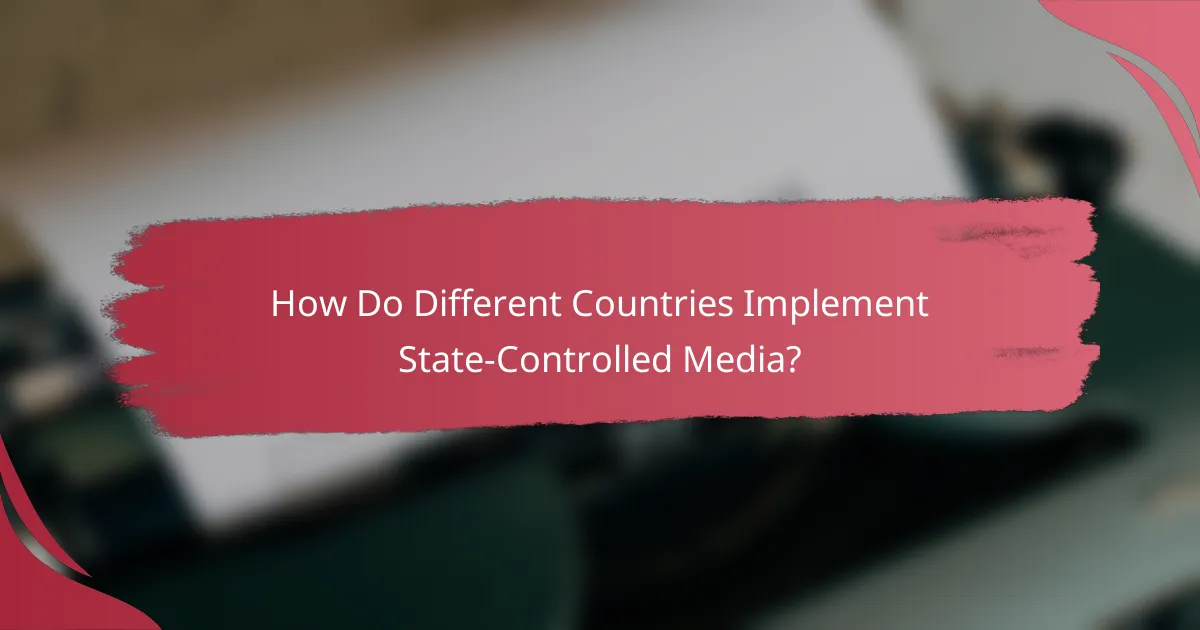
How Do Different Countries Implement State-Controlled Media?
Countries implement state-controlled media in various ways, often reflecting their political structures and cultural contexts. This can range from direct government ownership to regulatory frameworks that heavily influence media content and distribution.
China’s media landscape
China’s media landscape is characterized by strict government control and censorship. The Chinese Communist Party (CCP) oversees all media outlets, ensuring that content aligns with its political agenda. This includes both traditional media and digital platforms, where the government employs extensive monitoring and filtering systems.
In practice, this means that news coverage often omits sensitive topics such as human rights abuses or dissent. The Great Firewall of China is a notable example, blocking access to foreign news sites and social media platforms, thereby limiting the information available to the public.
Russia’s information strategy
Russia employs a multifaceted information strategy that blends state ownership with the promotion of pro-government narratives. Major television networks, such as Channel One and Rossiya, are state-run and dominate the media landscape, pushing content that supports government policies and downplays opposition views.
The Kremlin also utilizes social media and online platforms to disseminate its messages, often targeting specific demographics to shape public opinion. This strategy includes disinformation campaigns that aim to confuse or mislead the public about both domestic and international issues.
North Korea’s propaganda
North Korea’s propaganda is among the most extreme forms of state-controlled media, with all information being tightly regulated by the government. The Korean Central News Agency (KCNA) is the primary outlet for news, which is heavily focused on glorifying the ruling regime and its leaders.
Media in North Korea serves to reinforce the state’s ideology, portraying the country as a victim of external aggression while promoting a cult of personality around its leaders. The lack of alternative viewpoints and the absence of independent journalism create a highly controlled environment where dissent is not tolerated.
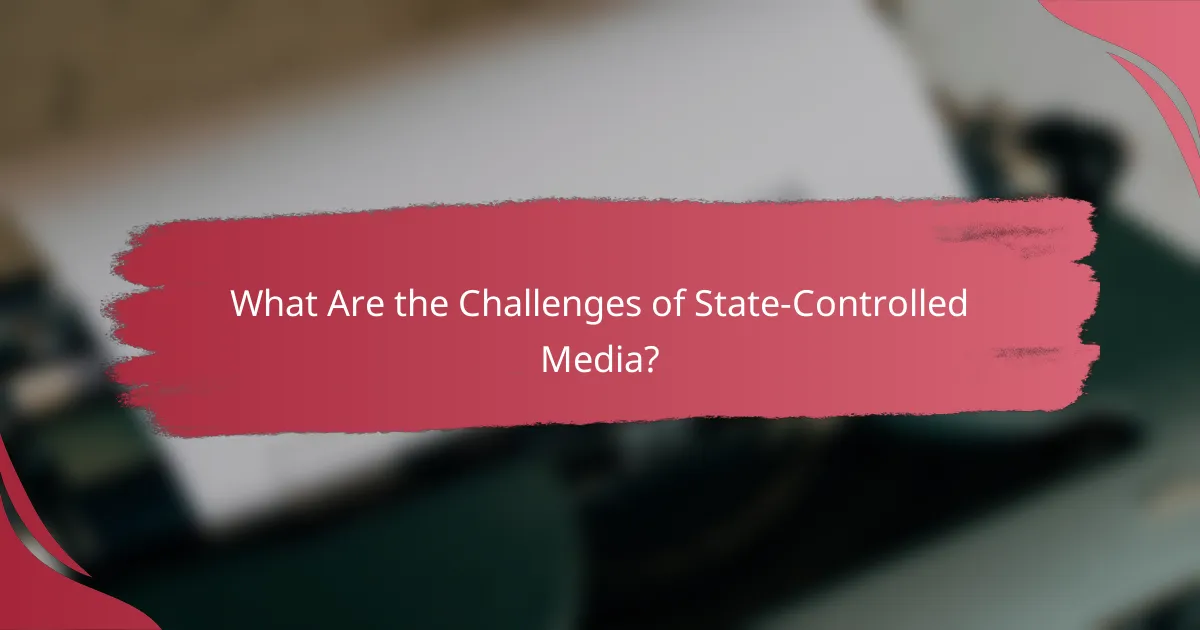
What Are the Challenges of State-Controlled Media?
State-controlled media faces significant challenges, primarily related to issues of bias, censorship, and public trust. These challenges can distort public opinion and limit the diversity of viewpoints available to citizens.
Media censorship
Media censorship is a prominent challenge in state-controlled environments, where governments often restrict content that contradicts their narratives. This can lead to the suppression of critical news, limiting the public’s access to information about political, social, and economic issues.
For instance, in many countries, news outlets may be required to follow strict guidelines that dictate what can be reported. This can result in a lack of coverage on important topics, such as corruption or human rights violations, ultimately shaping public perception in favor of the state.
Limited freedom of speech
Limited freedom of speech is another significant concern associated with state-controlled media. When the government exerts control over media outlets, it often stifles dissenting voices and alternative viewpoints. This can create an environment where citizens feel unsafe expressing their opinions.
In many cases, individuals who criticize the government may face repercussions, such as harassment or legal action. This fear can discourage open dialogue and reduce the overall quality of public discourse, leading to a less informed populace.
Public backlash
Public backlash against state-controlled media can occur when citizens become aware of censorship and manipulation. As trust in these media outlets erodes, people may turn to alternative sources of information, including social media or independent news platforms.
This shift can lead to a fragmented information landscape, where misinformation spreads rapidly. Governments may respond to this backlash with increased censorship or attempts to discredit independent media, further complicating the relationship between the state and its citizens.
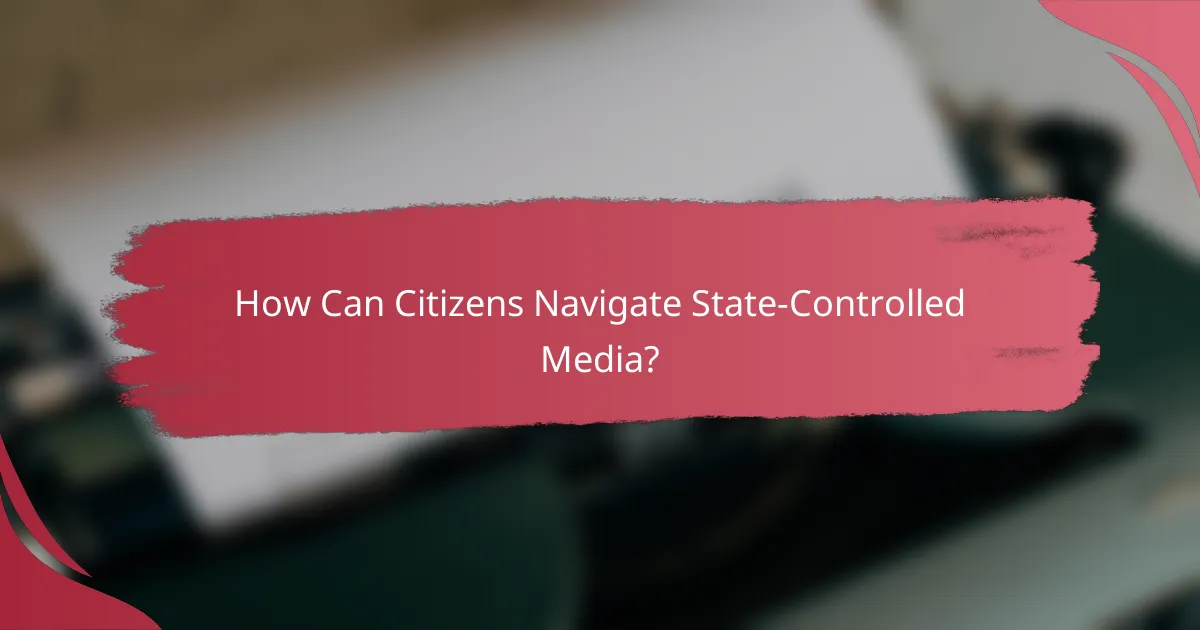
How Can Citizens Navigate State-Controlled Media?
Citizens can navigate state-controlled media by developing critical thinking skills, seeking diverse information sources, and engaging in media literacy education. These strategies help individuals discern bias, evaluate credibility, and make informed decisions about the information they consume.
Critical thinking skills
Critical thinking skills enable individuals to analyze and evaluate information rather than accept it at face value. This involves questioning the motives behind the media’s messages, recognizing emotional appeals, and identifying logical fallacies. For instance, when encountering sensational headlines, consider what information might be omitted or exaggerated.
Practicing skepticism can help citizens differentiate between fact and opinion. Regularly asking questions like “Who benefits from this information?” or “What evidence supports this claim?” fosters a more discerning approach to media consumption.
Diverse information sources
Accessing diverse information sources is crucial for gaining a well-rounded perspective. Relying solely on state-controlled media can lead to a narrow understanding of events and issues. Seek out independent news outlets, international media, and expert analyses to compare viewpoints and uncover different narratives.
Utilizing online platforms and social media can also help in finding alternative perspectives. However, it’s important to verify the credibility of these sources to avoid misinformation. Look for established organizations with a reputation for journalistic integrity.
Media literacy education
Media literacy education equips citizens with the skills to critically engage with media content. Programs that teach how to analyze media messages, understand media production processes, and recognize bias are essential. Many organizations offer workshops or online courses focused on these skills.
Incorporating media literacy into school curricula can foster a generation of informed citizens. Parents can also support this by discussing media content with their children, encouraging them to think critically about what they see and hear.
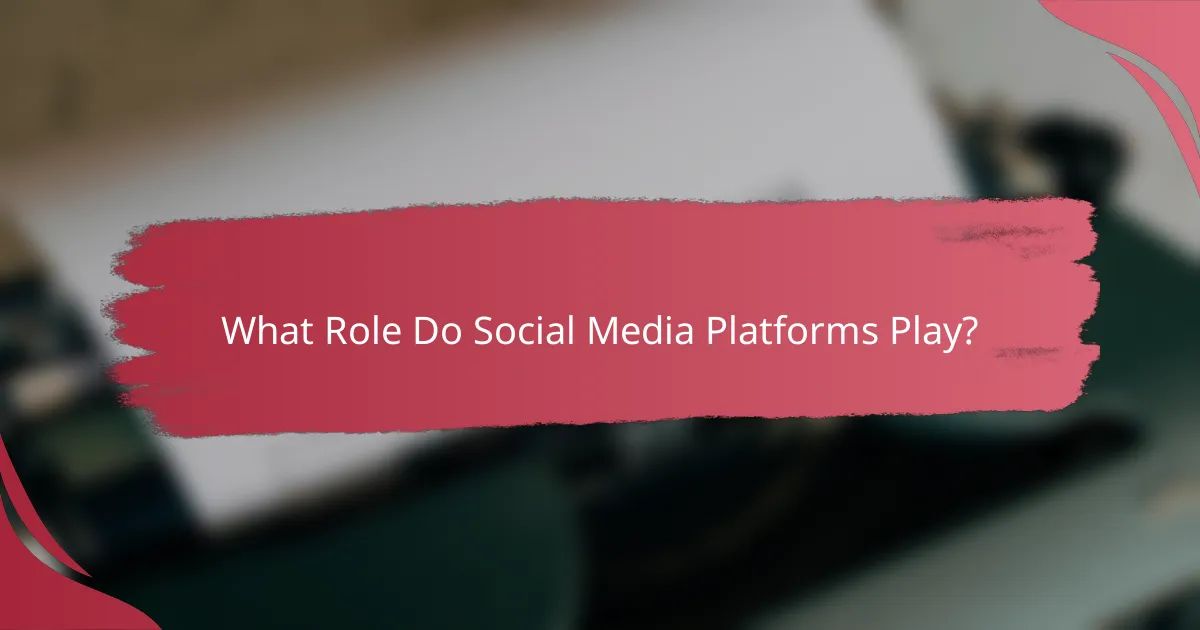
What Role Do Social Media Platforms Play?
Social media platforms significantly influence public opinion by shaping the narratives that users encounter. They serve as channels for state-controlled media to disseminate information, often amplifying government messages while filtering out dissenting views.
Amplifying state narratives
Social media platforms can amplify state narratives by prioritizing content that aligns with government messaging. Algorithms often favor posts that generate high engagement, which can lead to the promotion of official narratives over alternative viewpoints.
For example, in countries with state-controlled media, posts that support government policies may receive more visibility, while critical content is suppressed. This creates an environment where the public is more likely to accept the state’s perspective as the dominant viewpoint.
Users should be aware of the sources of information they engage with on social media. Critical thinking and cross-referencing multiple sources can help mitigate the effects of biased narratives and ensure a more balanced understanding of current events.
